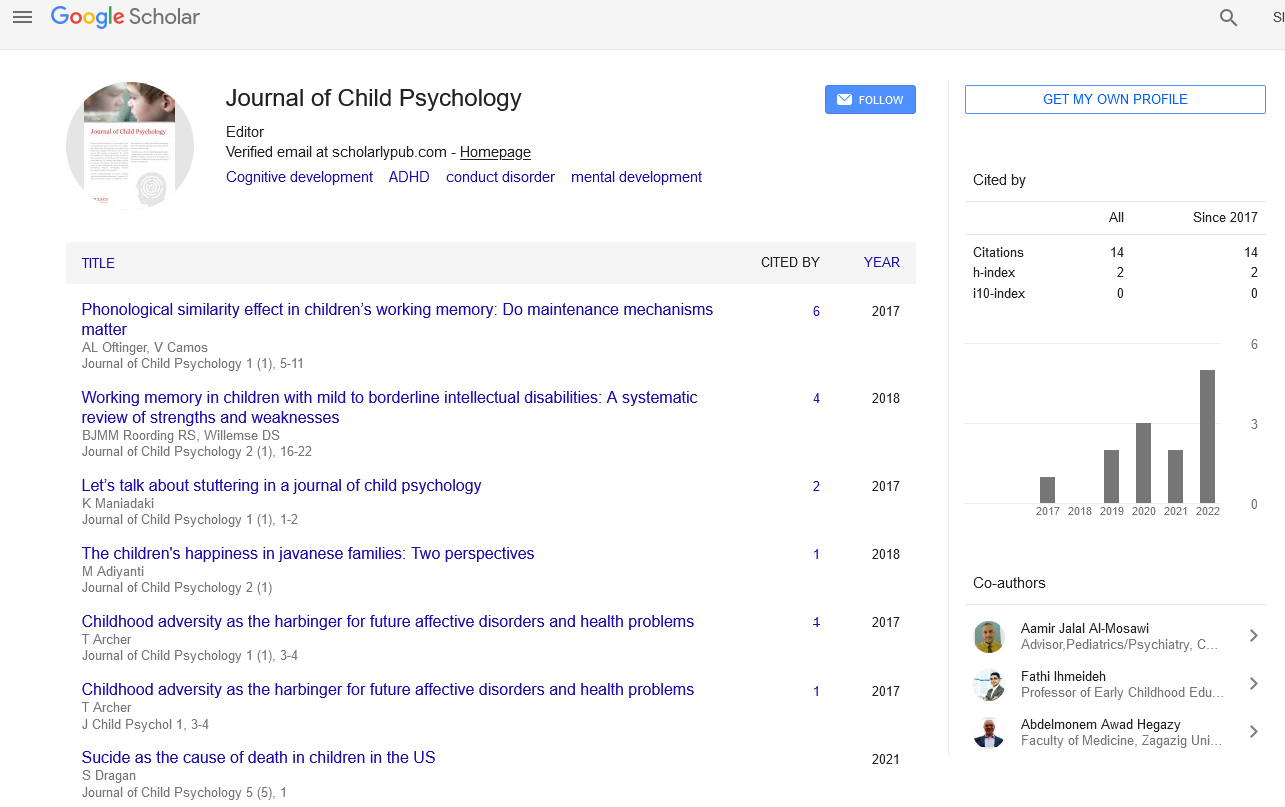Treatment of attention deficit/hyperactivity disorder in children
Received: 27-Jul-2021 Accepted Date: Aug 10, 2021; Published: 17-Aug-2021
This open-access article is distributed under the terms of the Creative Commons Attribution Non-Commercial License (CC BY-NC) (http://creativecommons.org/licenses/by-nc/4.0/), which permits reuse, distribution and reproduction of the article, provided that the original work is properly cited and the reuse is restricted to noncommercial purposes. For commercial reuse, contact reprints@pulsus.com
Commentary
ADHD is one of the most observed neurodevelopmental disorders of childhood. Usually first diagnosed in childhood, ADHD is a disorder marked by an ongoing pattern of trouble paying attention, hyperactivity and impulsive behaviour that interferes with functioning or development.
Children with ADHD may also struggle with troubled social relationships, low self-esteem and poor performance in education. Symptoms sometimes may get less with age. However, the symptoms may continue till adulthood.
Symptoms may include often being late or forgetting things, anxiety, low self-esteem, procrastination, easily frustrated, often bored, problems at work, trouble controlling anger, impulsiveness, trouble concentrating when reading, mood swings, depression, relationship problems, substance misuse, trouble staying organized.
Symptoms of ADHD can begin between the ages of 3 and 6, and can last far into adolescence and adulthood. Symptoms could be misjudged as emotional or disciplinary issues, or they will be completely overlooked in quiet, well behaved youngsters, causing a delay in diagnosis. Adults who have not been diagnosed with ADHD may have a history of poor academic achievement, occupational troubles, or difficult or failed relationships.
ADHD symptoms can change over time as individual ages. In young children with ADHD, hyperactivity is the predominant symptom. When the toddler joins academics, inattention may become more prominent and visual leading the child to struggle academically. In adults, symptoms such as feeling of restlessness are seen more often, but inattention and impulsivity may remain from the childhood. Many adolescents with ADHD also struggle with social and antisocial behaviours. Inattention, restlessness, and impulsivity tend to persist as the child grows into adulthood.
Current Research suggests that ADHD may be caused due to genetic factors, exposure to toxins such as lead, low birth weight, premature birth, epilepsy, alcohol abuse during pregnancy, imbalance in the neurotransmitter levels, injuries to the brain and studies suggest that people with ADHD have certain areas of their brain small compared to normal people.
ADHD can’t be prevented or cured. However, diagnosing it early, followed getting a timely treatment and education plan, can help to manage the symptoms.
For children suffering with ADHD, the first line of treatment is stimulants. These drugs directly act on the endocrine system and takes charge of the release of hormones into blood system. The Stimulants are mostly effective as the intervention increases the brain chemical hormone i.e., dopamine, which plays essential roles in thinking and attention. A combination therapy includes prescribing non-stimulant drugs in addition to stimulant drugs. A non-stimulant may be prescribed by the physician in case an individual had more side effects from stimulants, if a stimulant was not showing the expected results, or in addition to a stimulant to increase efficacy and to get expected results.
Adding Non-interventional therapy to an ADHD treatment plan may help patients and families better deal with daily challenges.
Parents and teachers can help children and teenagers with ADHD stay organized and follow directions with programs like keeping a routine and a schedule, organizing everyday items, using homework and notebook organizers, and giving appreciation when rules are implemented successfully.





